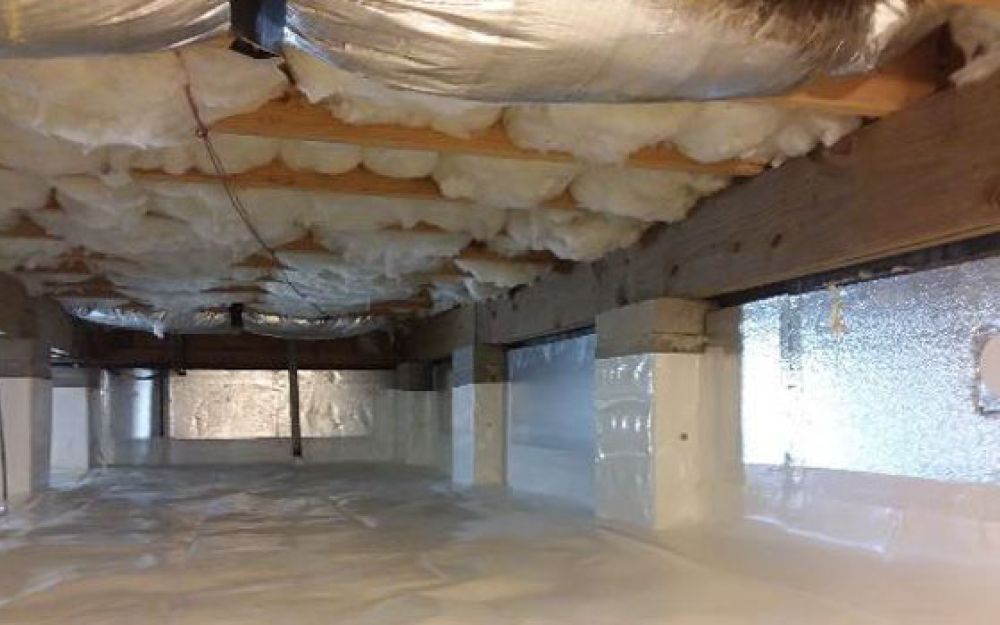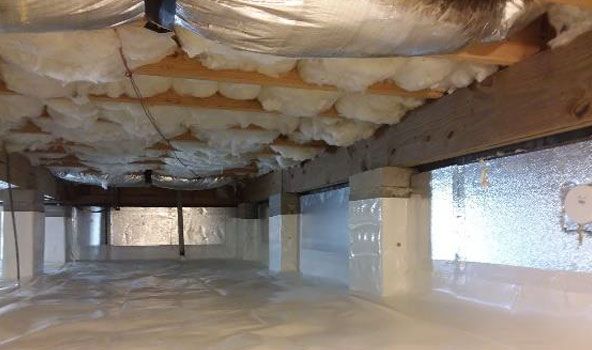
How to Insulate a Crawl Space
Did you know that proper insulation can make a massive difference in your energy usage? Better insulation in your crawl space means your HVAC system doesn’t have to work as hard, meaning lower energy bills.
A crawl space doesn’t have to be insulated for the structural integrity of the home, but when you insulate a crawl space, it can end up saving you money on your bills in the long term. It can also help keep temperatures steady throughout the house. For this reason, most homeowners consider it a valuable investment.
How do you properly insulate a crawl space, though? Use this guide to help you identify the best ways to ensure your crawl space insulation is sealed to perfection.
The first step is finding out what kind of crawl space you have.
Different Kinds of Crawl Spaces
Is your crawl space ventilated or unventilated? It is essential to diagnose the type of crawl space ventilation that you have before starting construction. This is because it will affect the types of insulation materials that are recommended, as well as the strategy of installation.
Ventilated Crawl Spaces
Ventilated crawl spaces allow for increased airflow and outside moisture. This means there is higher chances of moisture buildup, which can lead to mold and mildew along with warping and water damage.
Experts use fiberglass insulation below the subfloor. The subfloor is the area above the crawl space and below the home. This can be conveniently installed without issue.
Ventilated spaces are most suited to utilizing R-15 or R-19 fiberglass insulation, depending on the size of the floor joists.
Unventilated Crawl Spaces
The major difference in installation strategy is that insulation will fit on the walls rather than the ceiling of the crawl space. Unventilated crawl spaces have less airflow and different conditions. They are easier to insulate, generally, and use much less insulation to properly coat them.
Experts will install a vapor barrier to eliminate moisture, using a polyurethane liner on the floor and a dehumidifier to remove moisture.
The type of insulation is another difference between unventilated and ventilated crawl spaces. Unventilated spaces should use foam board insulation that meets the code requirements of being in a crawl space, in contact with the earth.
Building Codes and Regulations
There are several essential regulations and codes that must be met when installing insulation on the crawl space of your property.
Be sure to abide by the codes for your area, whether in North Carolina, Virginia, or any other state. For instance, in North Carolina, the access opening must be a minimum of 18 by 24 inches, meaning insulation should not impede this access point.
How to Prep the Crawl Space for Insulation
There are a few things that you can do before installing insulation. The most important is to remove moisture and water sources.
Leaks, pipes, or openings can be cause for concern. These will harm the integrity of the foundation if moisture gets under any protective sealing to develop into mold.
Other things that can help with the installation process include clearing out as much space as possible and paying special mind to rocks and debris that could puncture insulation.
You can also familiarize yourself with the parts of the crawl space, like:
- The Joists or Joist Bays are structural frame elements between beams
- The Vapor Barrier will seal out moisture within the insulation
- Batting is a type of insulation that consists of flat, pre-cut fiberglass
Insulate a Crawl Space: Step-by-Step
Insulating a crawl space doesn’t have to be a challenging feat when you know exactly what to do. Starting with the vapor barrier and moving on to the installation of batting and more, use this section to help guide your understanding of the insulation process.
Step 1: The Floor Vapor Barrier
The first thing to go down on the floor of the crawl space should be sheets of plastic. Lay these plastic sheets to create an insulating barrier against moisture from the damp ground.
For ventilated spaces, be sure not to block vents with insulation. You can use batting in between the joists instead.
Step 2: Wall Insulation for Sealed Crawl Spaces
If your space is unventilated, wall insulation is the best strategy for installation. A qualified professional installation crew will know to use the right insulation to insulation the walls, from ground to ceiling, to eliminate moisture and maintain energy efficiency.
In Virginia, a 2-4″ inspection gap is required to be able to inspect for termites so the insulation can’t cover this inspection gap.
Step 3: Subfloor Insulation for Ventilated Spaces
If your space is ventilated, the installation of fiberglass on the subfloor will be the perfect way to support the HVAC system and insulate the crawl space.
Signs Your Crawl Space Needs Insulation
Is your crawl space properly insulated? Here are some signs it might be time to invest in insulation:
Uneven Temperatures
If some rooms in your home are consistently colder or warmer than others, it could be due to poor insulation in your crawl space.
High Energy Bills
A poorly insulated crawl space can cause your HVAC system to work harder, leading to increased energy costs.
Cold Floors
If your floors feel cold, especially during winter, it could be a sign that your crawl space needs better insulation.
Moisture Problems
Excess humidity, mold, or musty odors in your crawl space could indicate a lack of proper insulation and vapor barriers.
Pest Infestations
Inadequate insulation can make your crawl space an inviting home for pests like rodents and insects.
If you notice any of these signs, it’s time to call a professional to assess your crawl space insulation needs.
Frequently Asked Questions About Crawl Space Insulation
How Much Does Crawl Space Insulation Cost?
The cost of crawl space insulation varies depending on the size of your space and the type of insulation you choose. On average, homeowners can expect to spend between $1,500 and $3,000 for professional installation.
How Long Does Crawl Space Insulation Last?
The lifespan of crawl space insulation depends on the material and installation quality. Properly installed and maintained insulation can last up to 25 years or more.
Can I Insulate My Crawl Space Myself?
While it is possible to insulate your crawl space as a DIY project, hiring a professional ensures the job is done correctly and safely. Professionals have the knowledge, tools, and experience to install insulation to meet your home’s specific needs and building codes.
Is Insulation Required in a Crawl Space?
Insulating your crawl space is not always required by building codes, but it is highly recommended. Proper insulation can significantly reduce your energy bills, improve your home’s comfort, and prevent moisture problems.
How Do I Know Which Type of Insulation Is Best for My Crawl Space?
The best insulation for your crawl space depends on factors like your local climate, home construction, and existing insulation. Consulting with a professional is the best way to determine the right insulation material for your needs.
Upgrade your crawl space insulation today and enjoy the benefits of a more comfortable, energy-efficient home!
Where Can You Turn For Quality Crawl Space Insulation?
How do you know that the professionals you are working with will deliver the highest-quality materials and strategies of installation? Opt to work with BAY Crawl Space & Foundation Repair for the best intuitive and efficient insulation services for all types of crawl spaces.
These unintrusive services allow you to easily outfit your crawl space with foolproof insulation solutions. Insulate a crawl space more efficiently than ever before. BAY Crawl Space & Foundation Repair delivers advantages that you can see on your energy bill. You can expect high-quality and effective crawl space insulation and vapor barrier installation services.
#1 Rated Locally for Crawl Space Insulation
Our reviews show our commitment to taking great care of our customers over the years. We pride ourselves on giving great customer experiences & delivering excellent value. Our experience & efficiency allow us to do more for less.
- Google – 4.9 Rating with 800+ Reviews
- Angi – 4.9 Rating with 300+ Reviews
- Facebook – 5.0 Rating with 300+ Reviews
- HomeAdvisor – 4.9 Rating with 200+ Reviews
- Better Business Bureau – 4.9 Rating with 300+ Reviews
Crawl Space Insulation Services
Our award-winning team of experts has hundreds of years of collective experience in crawl space and foundation repair. Here are a few reasons why our customers love us:
- Photos included with free inspections
- Flexible and customized options
- Discounts and financing available
- Excellent long-term warranties
- Great communication



